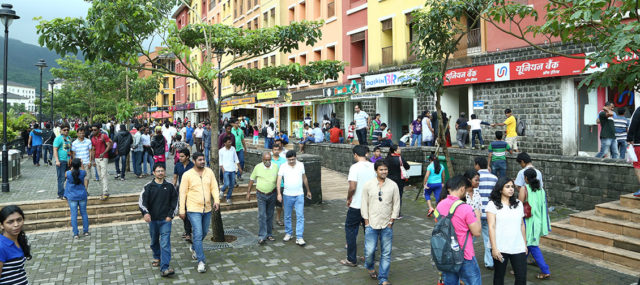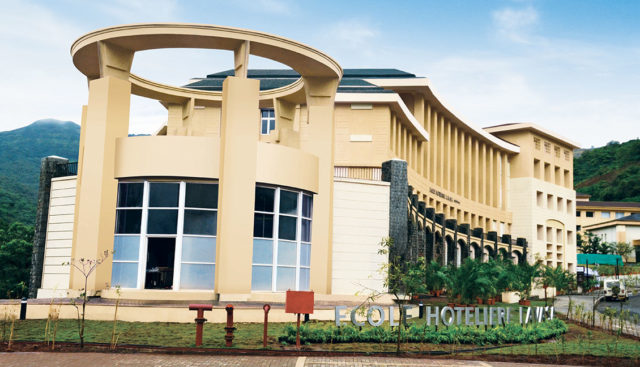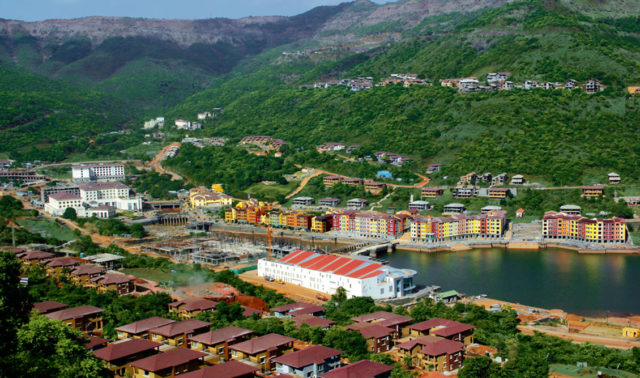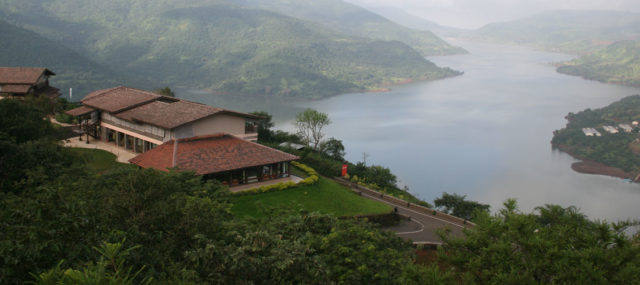From Lavasa, Exploring Business Models for New Cities
June 4, 2016 — Blog
Earlier this month I traveled to Lavasa, a new master-planned city built in the hilly region 300 kilometers southeast of Mumbai, India. I was there to chair the New Cities Foundation’s third roundtable for new city project leaders as part of Cityquest, our network of the world’s biggest and boldest new cities builders, an initiative launched in partnership with our partners at King Abdullah Economic City.

Representatives from 5 new city projects traveled to Lavasa to join a discussion on the topic of new city business models and their financial sustainability. Participating cities included host city Lavasa, GIFT City, and Sri City, all from India; Iskandar Malaysia, Malaysia; and Rawabi, Palestine.
We began with a tour and presentation of Lavasa. Going beyond the exchange of challenges, best practices, and ideas, the roundtable series gives new city representatives a first-hand chance to see how other new city projects are being conceived, designed and built. The tour demonstrated how Lavasa plans to be a financially viable project by expanding from being primarily a tourist destination to gradually include low-carbon industries such as higher education, entertainment and high-tech industries that will attract and retain long-term residents and businesses.

Lavasa has several unique features that are noteworthy as it aims to be a replicable model for urbanization in India. For example, its leaders have taken a thoughtful approach to ecology by incorporating biomimicry in the design and construction of the city, using hydroseeding methods to regenerate the biodiversity of the land with indigenous plants.

The city has also built a number of hiking trails designed to raise awareness about the region’s local flora and fauna, a fairly new concept in the Indian urban context.

On the technology front, Lavasa is in the planning stages of developing an integrated smart card that will give future residents full access to city services, including parking, emergency services and smart home features.
In terms of its business model, Lavasa is a fully privately developed city. However, as we discovered during the roundtable discussions, for all new city projects, the government is an equally important stakeholder whose active engagement and support of the project is crucial to its long-term viability and financial sustainability. If new cities are to fulfill their role of accommodating the frantic pace of urbanization, the cooperation and support of the public sector is necessary, especially in creating appropriate regulatory frameworks and mutually beneficial funding support systems.
Iskandar Malaysia is the only new city project in the group led by the public sector. Much of their success can be attributed to the comprehensive planning of the Iskandar Regional Development Authority, who is working towards a vision for economic growth while reducing carbon emissions. Rawabi, a privately led initiative, has set up a municipal council to create the city’s by-laws that will similarly guide their development. This council was selected by the city’s main developer, Massar International, in partnership with the government, represented by existing Palestinian ministries.
It was interesting to how the three Indian new cities’ business models varied based on the regional differences of state governance. GIFT (Gujarat International Finance Tec-City), whose aim is to be a financial trading hub, set up a joint venture company between the developer and the regional government for the leasing and shared infrastructure development of the land. On the other hand, Sri City, where manufacturing industries will drive economic growth, has developed a strong functional partnership with government authorities that allows them to obtain requisite permits quickly. Lavasa, as noted earlier, is solely employing a private real-estate development model.
Some key takeaways and questions raised at the meeting were:
- A new city’s business model is a reflection of the disparate business needs required to achieve the overall goals of the project. For example, GIFT aims to create and provide jobs in the financial services sector whereas Iskandar Malaysia has a strong focus on carbon emission reduction while increasing growth and improving wealth distribution.
- Every new city that participated in the roundtable is being strategically built in locations close to major existing urban hubs. Lavasa is close to Mumbai and Pune, Rawabi to Ramallah and Amman, GIFT to Ahmedabad, Iskandar Malaysia to Singapore, and Sri City to Chennai. The new cities utilize this proximity as a way to attract residents and businesses. However, they may risk being overshadowed by established cities’ limelight. What creative approaches exist for capturing the value of proximity to an existing metropolis?
While there is plenty to learn from each project, given the unique nature and socio-political context of new city projects, one size does not fit all when it comes to setting up business models that will ensure their long-term financial sustainability. Part of the challenge – and innovation – behind new cities is to develop new business models that match the ambitious goals of each project. Creative approaches to capturing value in the development of new cities, as well as different financing structures and opportunities for cooperation with the public sector were all central in this discussion.
The new city representatives had a unique opportunity to learn about each other’s business models and to share strategies for addressing the challenges in achieving financial sustainability. I look forward to continuing our productive discussions when we regroup this December in King Abdullah Economic City for our annual Cityquest-KAEC Forum.